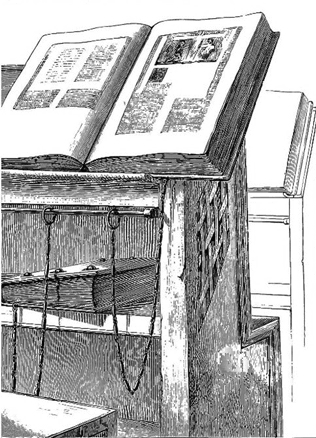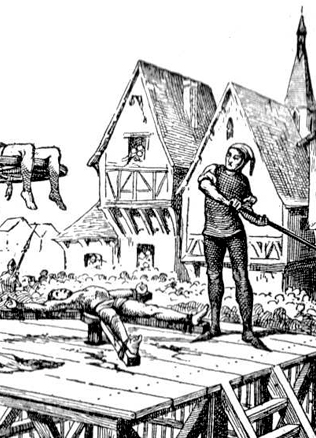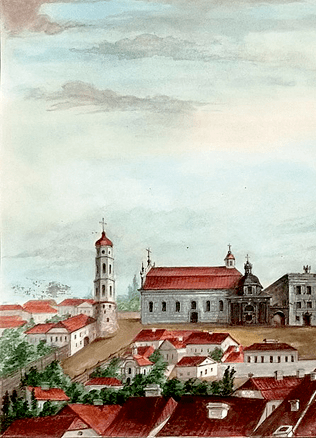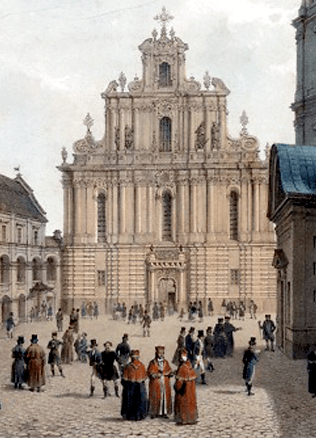Giorgio Biandrata
Giorgio Biandrata (lat. Blandrata) was an Italian physician, a religious figure and a polemicist, a most controversial person, who nevertheless succeeded in expressively representing the peculiarities of religious consciousness and anthropology prevailing in Europe and Lithuania of the 16th century.
“The Monster” that startled Jean Calvin
Giorgio Biandrata was born about 1516 in Italy, the Duchy of Saluzzo. He studied medicine in Montpellier, Pavia and Bologna. Having defended a doctoral thesis in Bologna in 1538, he specialized in the field of gynaecology. His first treatise was dedicated to Bona Sforza, Queen of Poland and Grand Duchess of Lithuania, and her daughter Izabela Jagiellon, the wife of Transylvanian prince John Zápolya. In 1540 Giorgio Biandrata was appointed personal physician to the Queen Bona Sforza. From 1545 to 1551 he lived in Transylvania (Alba Julia), where he treated a widowed Izabela. Giorgio Biandrata was also actively involved in political activities. The date of his conversion to Protestantism in the part of Transylvania, famous for confessional diversity, is not certain. When Izabela was forced to leave the country together with her son, Giorgio Biandrata returned to Italy in 1552, where he is believed to have adopted nicodemite practice (the practice of disguising the genuine beliefs). In 1556, Giorgio Biandrata emigrated to the Calvinist Geneva, where he was appointed elder of the Italian church. When suspicions of heresy were raised against him, Giorgio Biandrata left Geneva in May of 1558, together with his friend Giovanni Paolo Alciati della Motta. After several unsuccessful attempts to settle in Bern and Zurich, he came back to Poland. Giorgio Biandrata entered into contact with Francesco Lismanini, an Italian proponent of Reformation, spreading his ideas in Lithuania and Poland, even though the latter had been warned by Jean Calvin (1509–1564) against the friendship with Giorgio Biandrata. An extremely suggestive and well-educated personality, an experienced physician, G. Biandrata took no time to secure a close friendship with the leader of Lithuanian Reformation Mikołaj Radziwiłł the Black (1515–1565) and gained his trust. It is hardly surprising, therefore, that he became quite influential in the Lithuanian Evangelical church and came to visit Vilnius, for some time he even resided here. The Swiss Calvinists looked upon Giorgio Biandrata not as a lost truth-seeker but as a seed of evil and regarded all his claims about Christianity sheer hypocrisy (in his letter dated December 1558 and addressed to Francesco Lismanini, Jean Calvin calls Giorgio Biandrata a monster).
Leaders of the Western Protestant churches, competing for the confessional self-determination of Mikołaj Radziwiłł the Black, took steps to discredit Giorgio Biandrata, aiming to protect the Lithuanian and Polish Evangelists from the “snake” spitting “the poison of Servetus.” In the foreword to the Duke, preceding the second revised edition of comments to Apostle Letters, dedicated to Mikołaj Radziwiłł the Black (1560), Jean Calvin openly accused Giorgio Biandrata of antitrinitarian heresy and declared the Italian physician “more evil than Servetus”, whom Jean Calvin ordered to burnt at the stake in 1553.
Unconditional support of the prince
Having ignored Jean Calvin’s dedication and G. Biandrata’s denunciation for a year, Mikołaj Radziwiłł the Black finally responded the surly person, stating that Giorgio Biandrata was his only genuine friend, mentor and a most pious person to boot. Mikołaj Radziwiłł the Black also stated that he deeply regretted Jean Calvin’s bitterness. To ease his anger, Radziwiłł sent Jean Calvin a marten fur coat and a linen towel, hand-made by his wife.
In response, Jean Calvin poured angry scorn on the Radziwiłł and the whole Vilnius church for befriending a “totally worthless heretic.”
Nevertheless, Jean Calvin failed to convince Mikołaj Radziwiłł the Black to break away from G. Biandrata. The letters written by John Calvin (as well as those by Heinrich Bullinger, 1504–1575) exerted no influence on the decisions made Mikołaj Radziwiłł the Black. Thus, the Synods found G. Biandrata innocent, whereas the majority of Lithuanian and Polish Evangelists approved of the strategy proposed by G. Biandrata to introduce a moratorium on non-Biblical language. This proposal put up by G. Biandrata was based on a presumption which had for a long time been prevalent in GDL among Lithuanian Protestants, namely, that it was harmful practice to discuss religious matters in secular language. Mikołaj Radziwiłł the Black wrote to Jean Calvin (most likely influenced by G. Biandrata) that it was speculation leading to never-ending logomachy (battle of words). Any distancing from the text of the Holy Scripture meant moving away from the essence of Christianity, therefore the use of such words (usually of Latin origin) as Trinity, essence etc. in religious discourse was non-authentic. During the introduction of moratorium on the use of non-biblical language, as suggested by G. Biandrata, the decision was made to impose restrictions on the language used. Religious truths were to be stated in the language used in the Apostles’ Creed and the Holy Scripture. Even though such a radical proposal was not unconditionally approved by all Protestants, the Evangelical Synod of GDL, held in 1563 in Mordy, located in the landholdings of Mikołaj Radziwiłł the Black, confirmed the conclusion in favour of G. Biandrata: “Due to the statements made by some weak persons, we could not completely renounce the use of the word ‘Trinity’. This notwithstanding, we decided to significantly restrict its use, realizing that this word had been not sent by God but contrived by people and therefore has a significantly lower value than it used to have.”
Historiography treats this Synod as the meeting which testified the schism of the Evangelical Church in GDL, headed by Mikołaj Radziwiłł the Black. After this Synod, evangelists split into the Orthodox who defended the doctrine of Trinity and the so-called Antitrinitarians, who launched an intensive history of developing their Unitarian thought and a separate Church.
Wise silence or betrayed principles?
In 1563, upon the invitation of King John II Sigismund, the son of Isabella Jagiellon, G. Biandrata left for Transylvania again, where he was appointed the King’s counsel and pursued creative activities. In 1568, the first treatise, co-authored by Giorgio Biandrata and Ferenc Dávid, De vera et falsa, unius Dei, Filii et Spiritus Sancti cognitione, was published in Transylvania. It became the most outstanding monument of the Antitrinitarian thought of the 16th century. In 1568–1569, other works by Giorgio Biandrata were published as well.
All the religious treatises by Giorgio Biandrata were published anonymously. In Europe, he is held a bright example of nicodemism and simulation, manifestations of the religious behaviour in the16th century. Giorgio Biandrata never declared his views in public, he adapted to the political situation in a diplomatic way. On 21 September 1565, he sent a letter from Transylvania to the Polish follower of antitrinitarianism Gregory Paul of Brzeziny, in which he explained the strategy of wise silence (sillentium esse summam medicinam) to those holding the same views in Poland and Lithuania.
Giorgio Biandrata’s prestige in Transylvania declined after John Sigismund Zápolya’s death in 1571 and arrival of Jesuits in Transylvania. When a Catholic Stephen Báthory became ruler of Transylvania, he remained the King’s counsel and a close trustee. Giorgio Biandrata was an active politician, having significantly contributed to the process of electing Stephen Báthory King of Poland and Grand Duke of Lithuania. In 1575, he arrived in Warsaw to make a speech in the Polish Sejm in favour of Bathory’s candidature.
With the aim of maintaining political influence, Giorgio Biandrata broke the connection with his friend Ferenc Dávid, who chose to pursue the path to Nonadorantism. Most likely, it was at the instance of Biandrata, that Dávid was tried in 1579 and condemned to prison at the Fortress of Deva in Transylvania on the charges of “innovation”, where he died. Such a turn of events reportedly made Giorgio Biandrata’s old age bitter. Transylvanian Jesuits spread the word that Giorgio Biandrata even converted to Catholicism in repentance. The circumstances of Giorgio Biandrata’s death in 1588 remain uncertain.
Literature: D. Pociūtė, The Rebel Cathedrals. Early Reformation and the Connections between Lithuanian and Italian Evangelists (Maištininkų katedros. Ankstyvoji reformacija ir lietuvių–italų evangelikų ryšiai) Vilnius: Versus aureus, 2008.
Dainora Pociūtė



